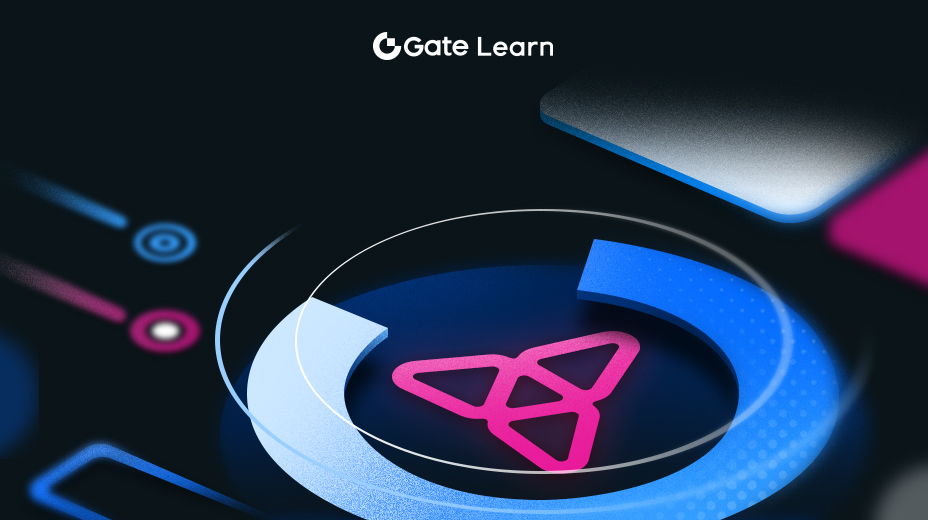Inovasi Teknis Mantel
Selamat datang di pelajaran keempat dari eksplorasi kita di Mantel, di mana kita akan mempelajari inovasi teknis canggih yang menjadi tulang punggung ekosistem Mantel. Pelajaran ini akan menyoroti seluk-beluk ketersediaan data dan perjalanan transaksi yang cermat dalam jaringan blockchain yang canggih ini.
Pengurutan Terdesentralisasi
Fungsi dan Pentingnya
Di jantung lanskap teknis Mantle terdapat sequencer terdesentralisasi, sebuah inovasi yang siap untuk mendefinisikan kembali efisiensi dan keandalan pemesanan transaksi dalam jaringan blockchain.
Detak Jantung Mantel: Pengatur Urutan
Sequencer, dalam banyak hal, merupakan detak jantung dari jaringan Mantle. Fungsi utamanya adalah untuk mengurutkan transaksi - yaitu, untuk menentukan urutan transaksi yang diproses dan ditambahkan ke blockchain. Peran ini sangat penting karena secara langsung memengaruhi kecepatan dan kelancaran jaringan. Dalam blockchain tradisional, urutan transaksi dapat menjadi hambatan, menyebabkan penundaan dan peningkatan biaya.
Desentralisasi: Sebuah Filosofi Inti
Mantle merangkul filosofi inti dari blockchain - desentralisasi - dalam desain sequencernya. Tidak seperti sistem terpusat di mana satu entitas tunggal mengontrol pemesanan transaksi, yang berpotensi menyebabkan sensor atau favoritisme, sequencer terdesentralisasi mendistribusikan kekuatan ini. Ini memastikan bahwa tidak ada satu pihak pun yang dapat mempengaruhi transaksi mana yang diproses terlebih dahulu atau memanipulasi sistem untuk keuntungan mereka.
Dengan mendesentralisasikan proses pengurutan, Mantle menyediakan sistem yang lebih demokratis dan transparan. Pendekatan ini selaras dengan etos komunitas blockchain yang lebih luas, yang mempromosikan keadilan dan keamanan. Sequencer terdesentralisasi dirancang untuk menahan titik-titik pusat kegagalan, membuat jaringan lebih kuat terhadap serangan dan pemadaman.
Salah satu manfaat paling signifikan dari sequencer terdesentralisasi adalah potensinya untuk mengoptimalkan hasil transaksi. Dengan memesan transaksi secara efisien, jaringan Mantle dapat memproses volume transaksi yang lebih tinggi dengan kecepatan yang lebih tinggi, mengatasi masalah skalabilitas yang mengganggu banyak jaringan blockchain.
Sequencer terdesentralisasi Mantle juga membangun kepercayaan melalui transparansi. Pengguna dapat yakin bahwa transaksi mereka diperlakukan secara adil, sehingga menumbuhkan kepercayaan pada jaringan. Transparansi ini bukan hanya tentang membangun kepercayaan tetapi juga tentang memungkinkan verifikasi. Siapa pun dapat memeriksa dan memverifikasi urutan transaksi, yang merupakan bagian integral dari menjaga integritas jaringan.
Blockchain Modular dan LSP
Keuntungan dari Arsitektur Modular
Arsitektur modular adalah karakteristik utama Mantle, yang membedakannya dari sistem blockchain tradisional. Arsitektur ini membagi jaringan blockchain menjadi beberapa lapisan yang terpisah, masing-masing bertanggung jawab untuk aspek yang berbeda dari operasi jaringan. Dengan demikian, Mantle dapat menawarkan beberapa keuntungan:
Setiap lapisan dalam arsitektur modular Mantle dikhususkan untuk serangkaian tugas tertentu, sehingga menghasilkan tingkat efisiensi yang tinggi. Sebagai contoh, satu lapisan dapat berfokus hanya pada eksekusi transaksi, sementara lapisan lainnya berurusan dengan mekanisme konsensus. Spesialisasi ini memungkinkan pengoptimalan yang tidak mungkin dilakukan dalam struktur monolitik di mana semua tugas diproses bersama.
Modularitas menawarkan skalabilitas yang ditingkatkan. Dengan berbagai lapisan yang menangani fungsi yang berbeda, jaringan dapat mengelola lebih banyak transaksi dan beradaptasi dengan lebih mudah terhadap perubahan permintaan. Selain itu, sistem ini dapat berkembang secara lebih fleksibel, dengan pembaruan dan peningkatan yang dilakukan pada masing-masing lapisan tanpa merombak keseluruhan sistem.
Dalam sistem modular, peningkatan dan pemeliharaan dapat dilakukan secara terpisah, sehingga mengurangi risiko gangguan di seluruh jaringan. Setiap lapisan dapat diperbarui atau dipelihara secara independen, memungkinkan peningkatan berkelanjutan dengan waktu henti minimal.
Peran LSP dalam Tumpukan Teknologi Mantel
Liquid Staking Protocol (LSP) memainkan peran penting dalam arsitektur modular Mantle, yang bertindak sebagai jembatan antara mekanisme staking dan kemampuan keuangan terdesentralisasi jaringan.
Integrasi dengan DeFi
LSP terintegrasi secara mulus dengan lapisan DeFi pada arsitektur Mantle. Hal ini memungkinkan aset yang dipertaruhkan untuk digunakan dalam ekosistem DeFi, sehingga pengguna dapat memperoleh imbalan taruhan sambil berpartisipasi dalam aktivitas keuangan lainnya.
Meningkatkan Partisipasi Jaringan
Dengan menyediakan mekanisme staking yang mengeluarkan token cair (mETH), LSP mendorong partisipasi jaringan yang lebih luas. Pengguna dapat melakukan staking ETH dan menerima mETH, yang kemudian dapat mereka gunakan di seluruh ekosistem DeFi Mantle, memberikan insentif untuk melakukan staking dan keterlibatan aktif dengan penawaran platform.
Dukungan untuk Keamanan Jaringan
LSP juga mendukung keamanan jaringan secara keseluruhan. Aset yang dipertaruhkan berkontribusi pada mekanisme konsensus jaringan, yang sangat penting untuk menjaga integritas blockchain. Melalui LSP, aset-aset yang dipertaruhkan ini digunakan untuk mendukung operasi dan keamanan jaringan.
Ketersediaan Data dan Siklus Hidup Transaksi
Dalam struktur blockchain modular Mantle yang canggih, ketersediaan data dan siklus hidup transaksi adalah komponen penting yang memastikan ketahanan jaringan dan kepercayaan pengguna.
Peran EigenDA dalam Penanganan Data
EigenDA berdiri sebagai landasan dalam arsitektur Mantle, memastikan bahwa ketersediaan data efisien dan aman. Sebagai lapisan khusus dalam desain modular Mantle, EigenDA ditugaskan dengan peran penting untuk menangani aksesibilitas data transaksi.
Ketersediaan data sangat penting untuk menjaga transparansi dan keamanan dalam blockchain. EigenDA memfasilitasi hal ini dengan menyediakan sistem di mana data tersedia untuk divalidasi dan di mana integritas data dipertahankan. Pendekatan ini sangat penting untuk memungkinkan setiap peserta jaringan memverifikasi status dan riwayat blockchain.
Dengan memisahkan ketersediaan data dari lapisan eksekusi, EigenDA mendukung skalabilitas Mantle. Hal ini memungkinkan jumlah data yang lebih banyak untuk diproses tanpa membebani rantai utama, sehingga meningkatkan kinerja dan kapasitas jaringan.
Tahapan Transaksi Mantel
Siklus hidup transaksi dalam ekosistem Mantle adalah proses multi-tahap yang memastikan ketepatan dan keandalan setiap operasi.
Inisialisasi dan Eksekusi
Transaksi dimulai dengan inisiasi oleh pengguna dan dengan cepat diambil oleh lapisan eksekusi jaringan. Di sini, instruksi mentah diproses, dan tindakan yang diinginkan dieksekusi dalam ekosistem Mantle.
Validasi dan Konsensus
Setelah eksekusi, transaksi berpindah ke tahap validasi. Di sinilah lapisan konsensus, termasuk EigenDA, mengonfirmasi kebenaran transaksi dan menyelesaikan statusnya. Lapisan konsensus memastikan bahwa jaringan menyetujui hasil transaksi, memperkuatnya dalam blockchain.
Agregasi dan Finalisasi
Fase terakhir melibatkan agregasi hasil transaksi dan finalisasinya. Pengumpul Pengembalian memainkan peran penting pada tahap ini, mengkonsolidasikan hasil dan memastikan bahwa imbalan, biaya, dan status akhir dicatat dan diatribusikan secara akurat.





